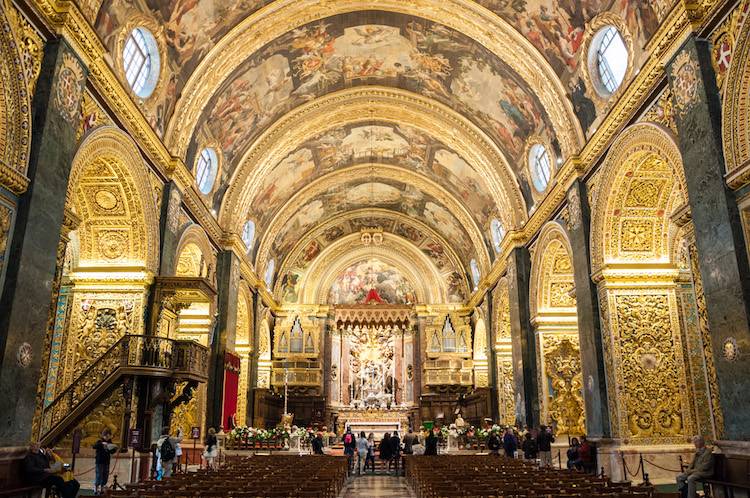The CoCathedral Valletta is certainly one of the most beautiful Churches I have ever seen. It is a Roman Catholic Cathedral dedicated to St John. The CoCathedral is so called, because the original Catholic Cathedral was St Paul’s Cathedral in Mdina (the Silent City), which was abandoned when the capital was transferred to Valletta.
From the outside, it admittedly doesn’t look up to much – but it is the inside of the CoCathedral that will astound and amaze you. The CoCathedral of Valletta is a recognised UNESCO world heritage site.
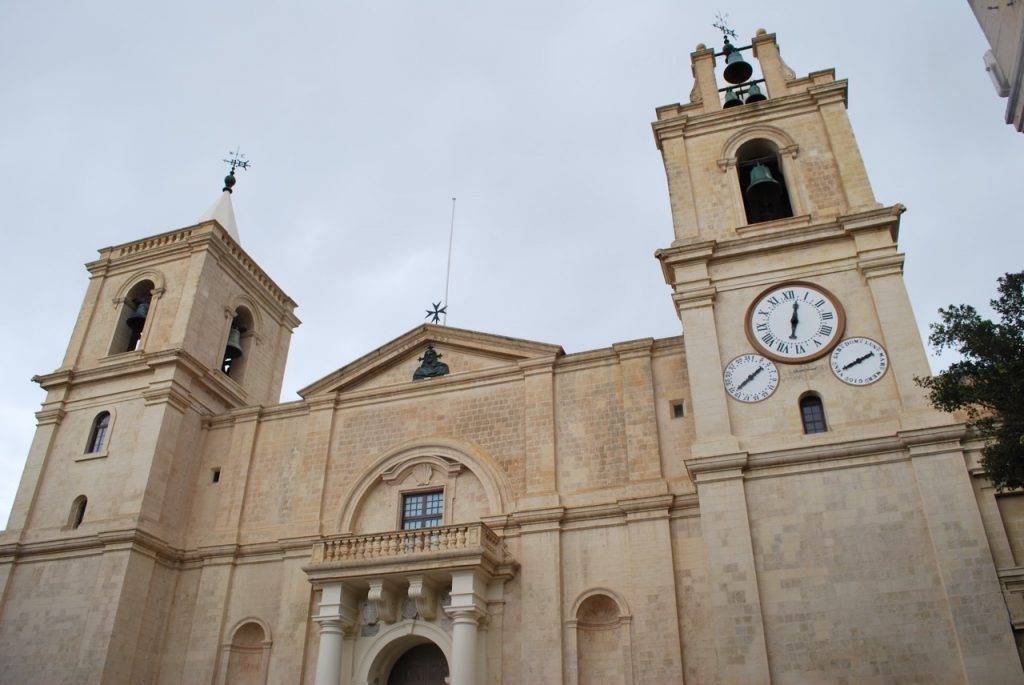
The exterior of the Church is recognised by the two bell towers with three clocks on the right, and the Maltese cross at the top in the centre. Don’t try to get in here – the visitors entrance is to the rear of the Church.
The Floor of Memorials or Tombstones
Our guide pointed out the skeleton on a tombstone on the floor as we entered and said “don’t step on the skeleton, as you will soon become one!” As we entered further, we realised that we are standing on what is possibly the most beautiful floor in the world. Many of the tombstones are of the Knights of the order of St. John.
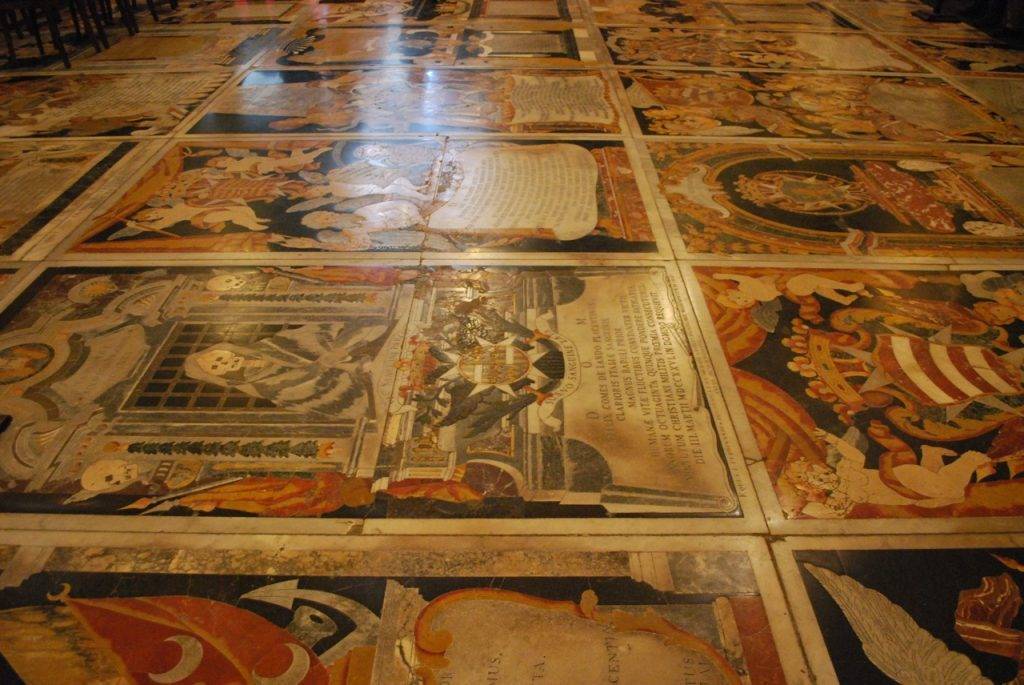
The Ceiling Frescos and Tapestries
The images in the ceiling life sized – the artists used to go up sketch, come down, look and repeat. The ceiling was painted by Mattia Preti, the Calabrian artist and knight, during the Baroque period. He painted the vaulted ceiling and side altars with scenes from the life of John the Baptist – the forerunner to Christ. The Cathedral is gleaming to give glory to baptism of Jesus from Saint John.
Images of Raphael Cotoner who redecorated the interior can also be identified, along with the flag of the knights of Saint John (Red with a white cross).
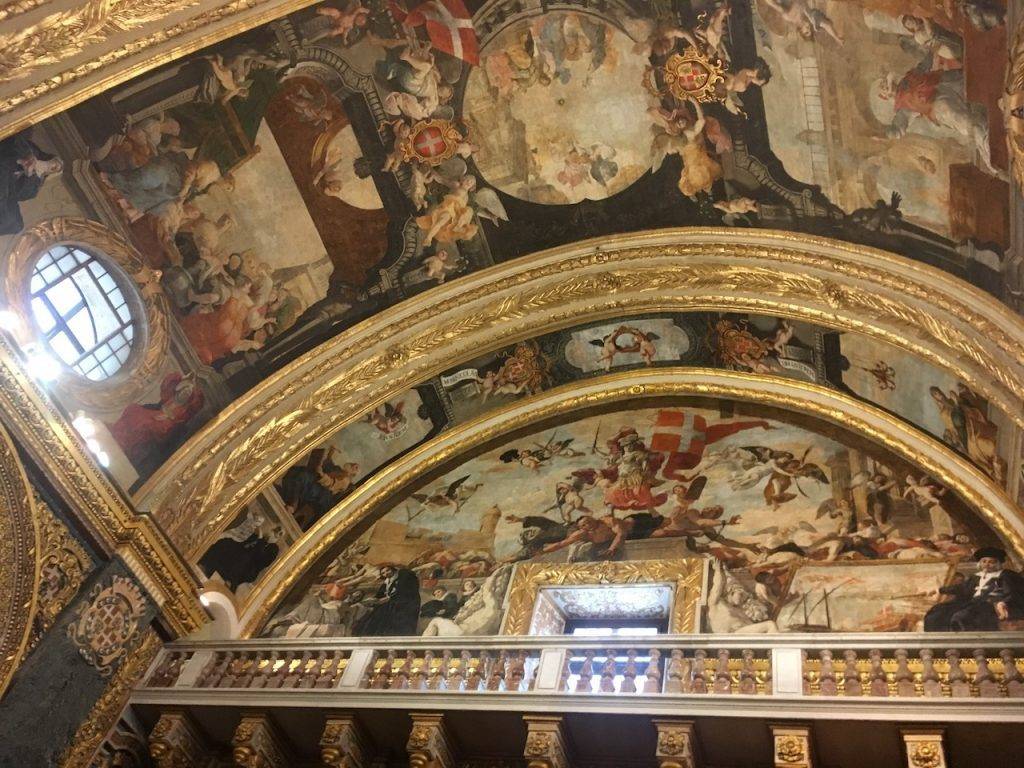
The set of Tapestries at St John’s Co-Cathedral were a gift made by Grand Master Ramon Perellos y Roccaful to the Church in 1697. They show the triumph of the Eucharist including scenes from the life and death of Christ and are the largest complete set in the world. Not all are on display. Fourteen panels represent the Virgin Mary, Christ the Saviour and the Apostles and the Grand Master Perellos’s full length portrait complete the set. They were made to hang from the cornice along the nave during important occasions such as the feast of St John the Baptist. (https://www.stjohnscocathedral.com/position-of-tapestries/)
The Altar of the CoCathedral Valletta
The Altar itself is decorated with lapis lazuli (the most precious stone) and contains symbolic representations of the four Evangelists – Matthew, Mark, Luke and John.
- Matthew – A winged Man
- Mark – Winged Lion
- Luke – Winged Ox
- John – Eagle
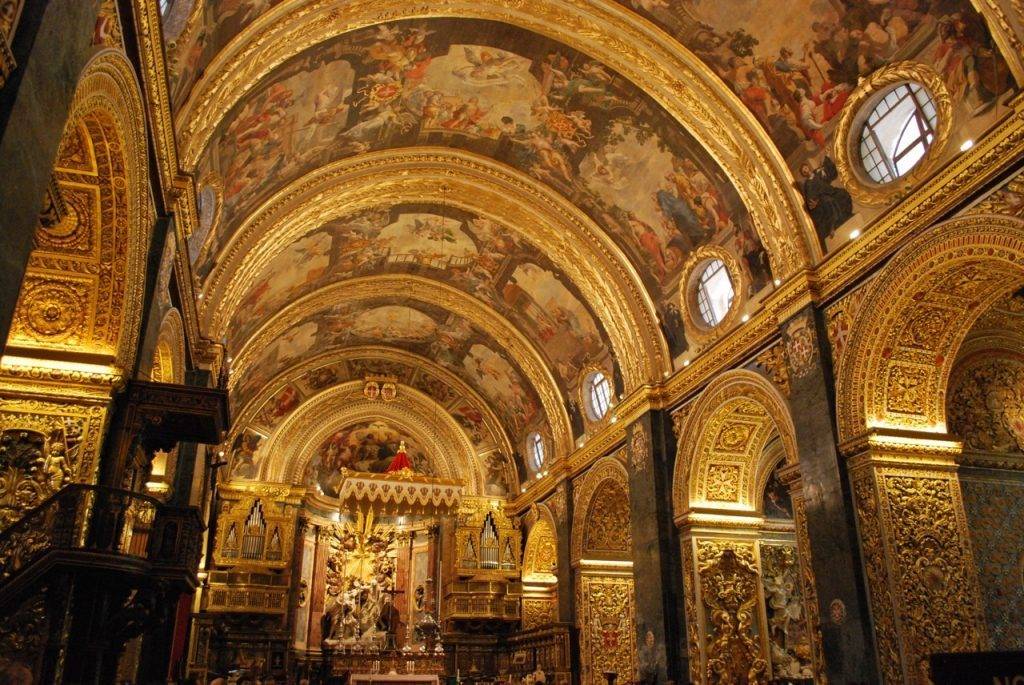
Either side of the altar you can see two beautiful guided organs – There are 3000 pipes in each!
The 8 Side Chapels of the 8 Tongues
How is the Cathedral divided? To understand this, it is important to understand Christ the King and the eight pointed cross of Saint John. The eight pointed cross represents the eight languages of the order of the knights of St. John. The Cathedral is divided into eight side chapels to reflect this. In reality, they also represent the eight beatitudes, e.g. being merciful, the fight for justice etc.
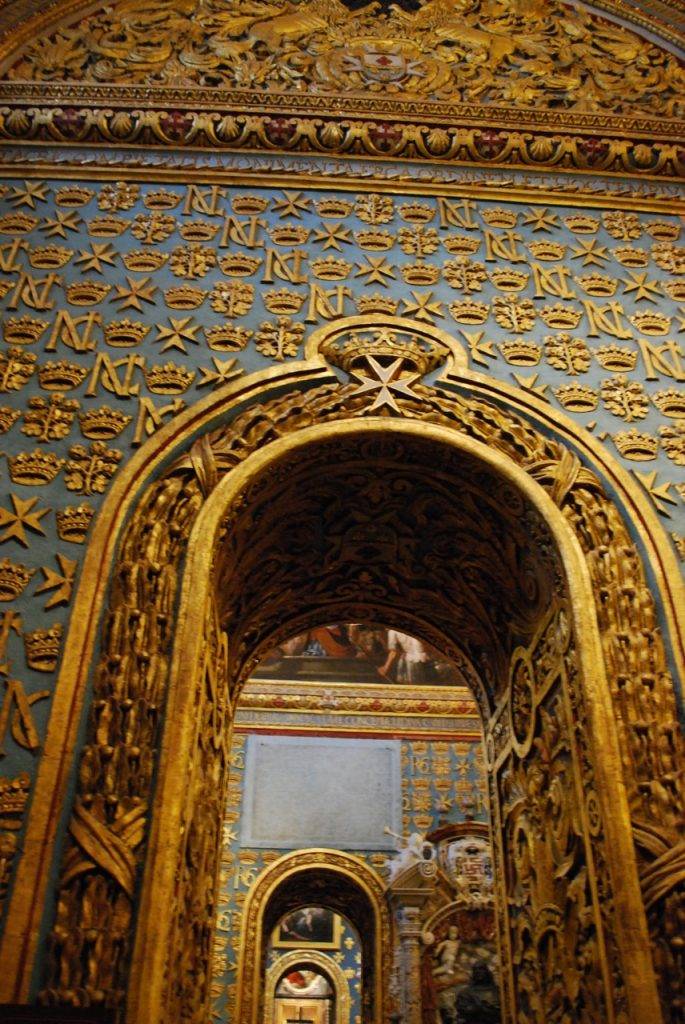
In the eight chapels, as mentioned – there is one for every language or people and also one for every lamb or Saint:
- The chapel of the Anglo-Bavarian Langue
- The chapel of the Langue of Provence
- The chapel of the Langue of France
- The chapel of the Langue of Italy
- The chapel of the langue of Germany
- The chapel of the Langue of Auvergne
- The chapel of the Langue of Aragon
- The chapel of the Langue of Castile, Leon and Portugal
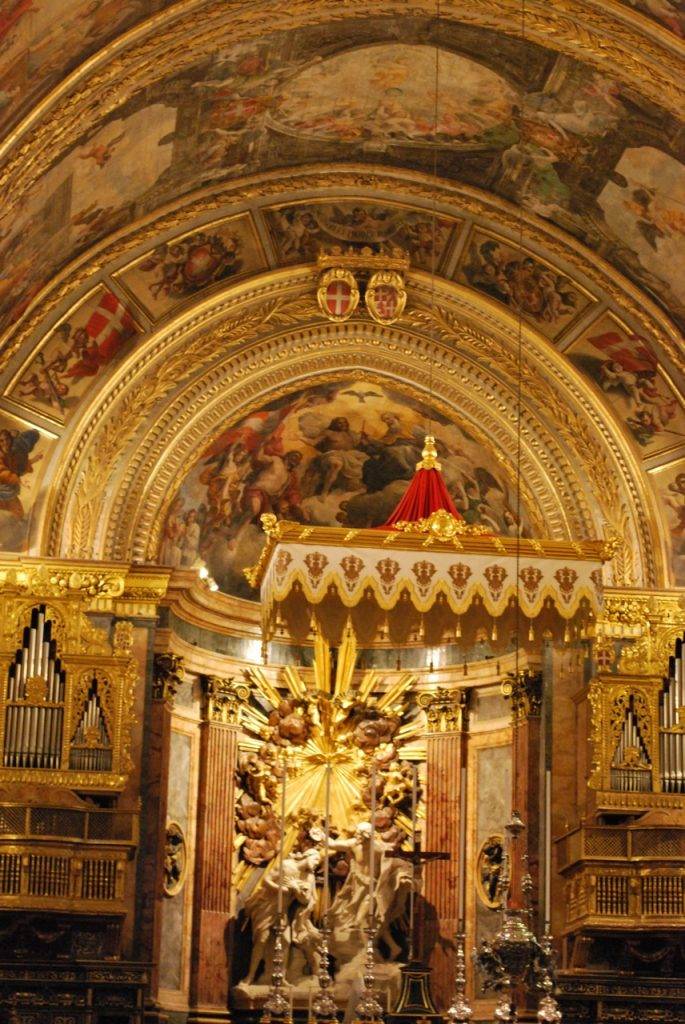
There is also a chapel of Our Lady of Philermos from Rhodes – Greece.
Restoration of the CoCathedral Valletta
Extensive restoration of the CoCathedral took place in 2011, which particularly focused on the Gold embellishment. They restored approximately 2000 metres of gold foil!
Would you believe that the CoCathedral was originally modestly decorated until it was redecorated by Grand Master Raphael Cotoner in the 1660’s to rival the Churches of Rome.
Two Caravaggios!
The treat for any art lover is that the Co-Cathedral houses not one, but two Caravaggio’s in the Oratory. Caravaggio was an Italian painter active in Rome, Naples, Malta, and Sicily between 1590s-1610. The two pieces on display are the Beheading of Saint John and the portrait of Saint Jerome. Caravaggio’s are often 75% dark to have an impact and allow the characters to stand out. The Beheading of Saint John (below) is the only Caravaggio actually signed by the artist himself.
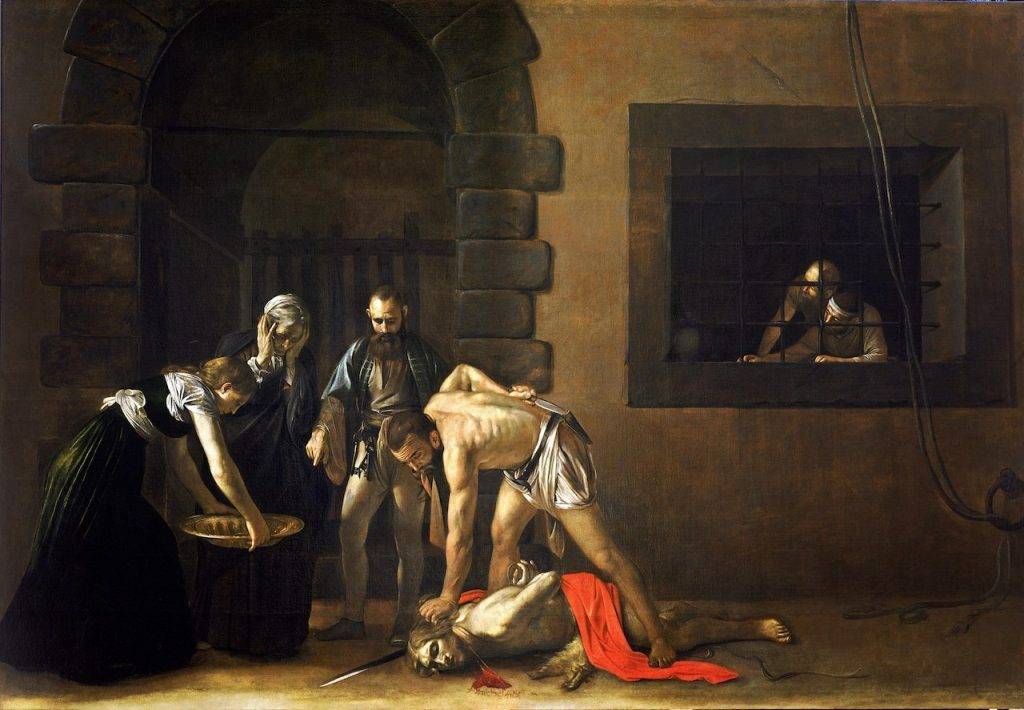
Practicalities of visiting St John’s Co-Cathedral Valletta
The visitors entrance is round the back of the Cathedral and you will need to pay 10€ for a ticket (7.50€ concession) which is well worth it as it includes an audio guide.
Last admission is 4.30pm Monday to Friday and 12.30 on Saturdays. The CoCathedral Valletta is closed to visitors on a Sunday – do not attempt to visit on the day of rest!
Remember that this is an extremely sacred place of worship, so you will need to remove your hat and keep noise to a minimum inside. Photos are allowed, but no flash. The CoCathedral Valletta encourages you to share pictures on social media with the following hashtags and @mentions:
#stjohnscocathedral #stjccf
www.facebook.com/stjohnscocathedral
www.instagram.com/stjohnscocathedral
If you would like more information on visiting the CoCathedral, visit: https://www.stjohnscocathedral.com/

